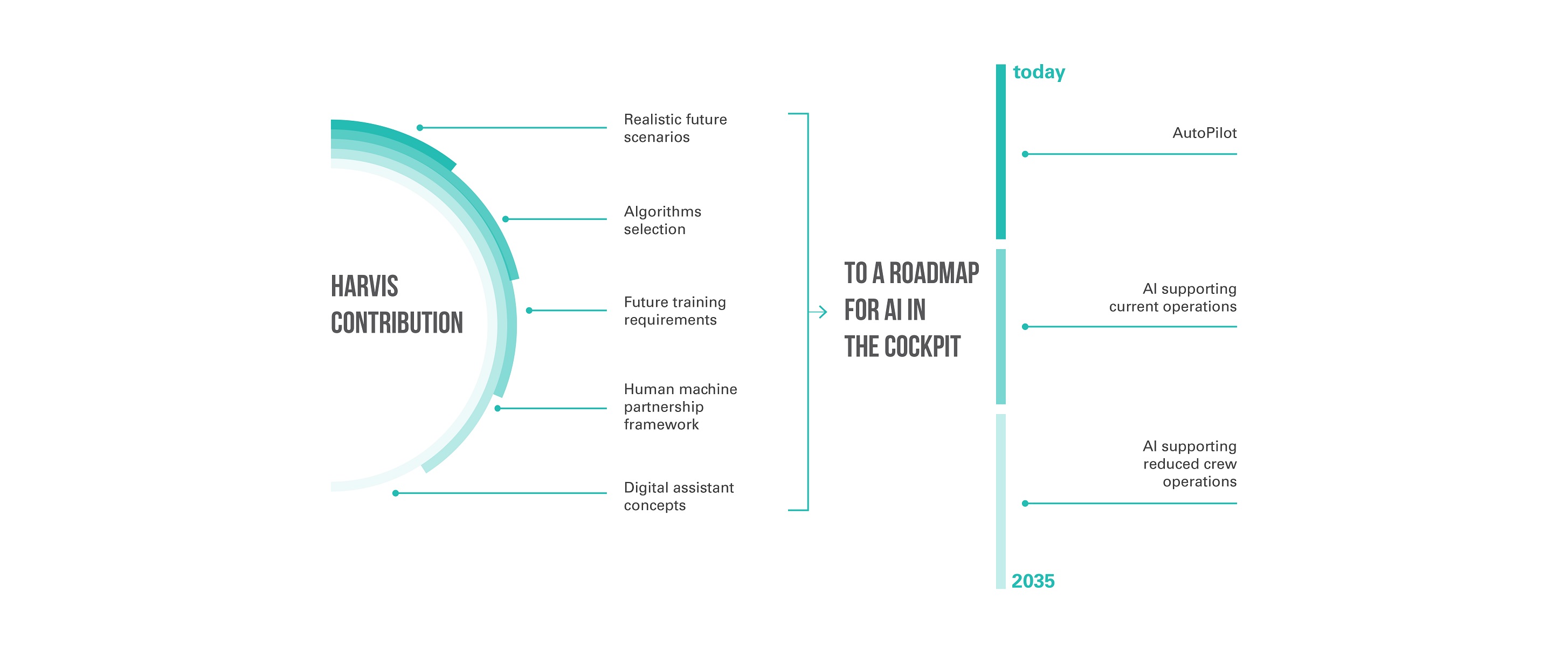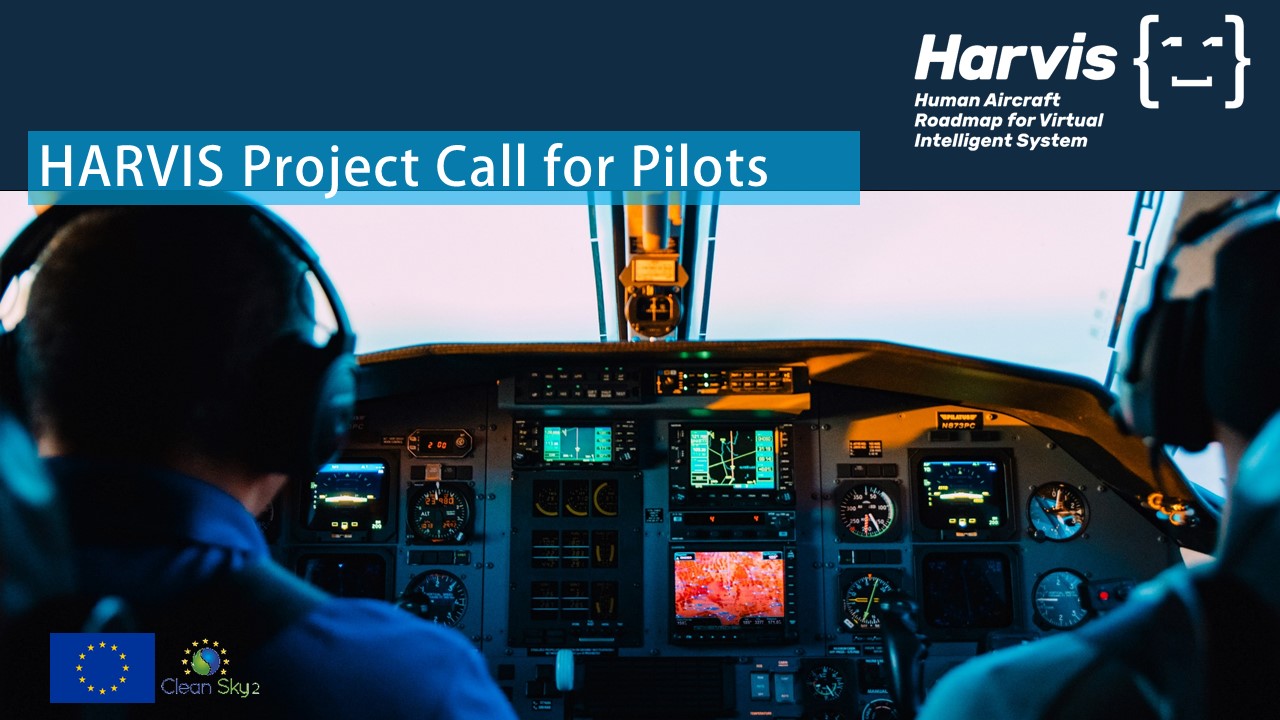How to support decision-making of pilots in complex situations?
The HARVIS project aims to answer this question by developing a future concept of Artificial Intelligence in the cockpit.
HARVIS: Human Aircraft Roadmap for Virtual Intelligent System
Flight movements are growing significantly in Europe, with no trend reversal expected. The integration of unmanned aircraft into the air space will make traffic management even more complex.
A significant impact on pilots’ job is inevitable, with increasing information to deal with and new tasks to accomplish. Framing the human-machine interaction in terms of partnership will help building capacity in machines to better understand humans, and in people to engage collaboratively with them. In the cockpit, this partnership will lead to pilots using a set of new technologies, capable of self-learning, to anticipate needs and to adapt to pilots’ mental states.
Goals
The main goal of the HARVIS Project is to identify how cognitive computing algorithms, implemented in a digital assistant, could support the decision-making of single pilots in complex situations. To reach this goal, the project will deliver:
A State-of-the-Art of cognitive computing algorithms.
A future Artificial Intelligence in the cockpit concept.
A set of realistic scenarios in which a digital assistant is likely to bring benefits to flight operations.
A roadmap providing guidance for the adoption of the demonstrated concept by 2035.

Approach
The approach taken by the HARVIS Projects is:
Timeline

Timeline
JUN 2019
What has been done so far?
State-of-the-Art of cognitive computing.
DEC 2019
What could be done?
Potential cognitive computing aided tasks & Use cases
DEC 2020
What’s the impact of AI on performance?
Human-Machine partnership Framework & Performance Envelope Demonstrations
DEC 2021
How to move towards AI in the cockpit?
Technology roadmap Future training and workforce




